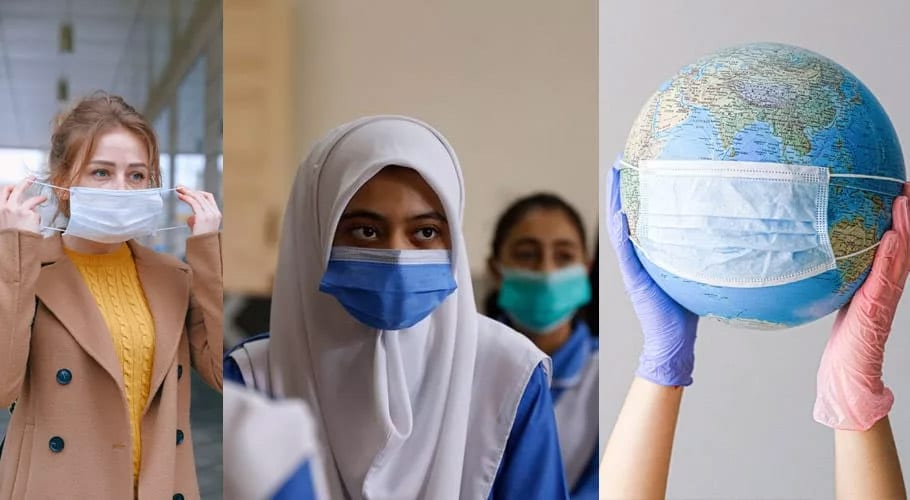Countries across the world are seeing a resurgence in COVID-19 cases after successfully slowing outbreaks.
The vast majority of countries, including Pakistan are declaring more cases each, even though the number of infections in those countries where it had gone down begins to rise.
Infections are already beginning to rise to levels unseen for months in the United States, Italy, France and Germany, even before the onset of autumn, when cold weather was expected to bring a revival in the infection. It might be a cause for jubilation in Pakistan that the worst is behind us.
But, while infection numbers may appear higher, it could simply be that increases in testing capacity are identifying more cases.
Current situation of the virus
The global epidemic of coronavirus has infected 38,432,182people in the world and 1,092,044 people have lost their lives.
The number of coronavirus cases across the world has surged to 38,432,182, while the pandemic has so far claimed more than 1,092,044 lives across the globe. As many as 28,887,778have been cured and at present, the number of active cases is 8,452,360.
The United States and India are the most affected by the virus in the world. The number of people infected with COVID-19 in the United States has risen to 8,093,600 with 220,900 deaths.
India ranks second among the countries affected by the coronavirus, with more than 7,241,517 people affected and a total death toll of 110,645.
Brazil is the third most affected country by the coronavirus with more than 5,114,823 patients and 151,063 deaths.
COVID-19 in Pakistan
Pakistan’s COVID-19 outbreak is surging again with authorities imposing new “mini, smart lockdowns” to prevent a second wave of infections as winter approaches and Pakistanis increasingly flout social distancing and mask-wearing precautions.
The coronavirus has claimed 14 more lives, taking the death toll to 6,601. According to the National Command and Operations Center, 615 new cases of coronavirus have been reported across the country and the total number has reached 320,463.
In Pakistan, 35,080 coronavirus patients have recovered and the number of people undergoing treatment dropped to 8,782. The coronavirus has killed 2,270 people in Punjab and 2,562 in Sindh.
The death toll in Khyber Pakhtunkhwa has risen to 1,264, 189 in Islamabad, 146 in Balochistan, 90 in Gilgit-Baltistan and 80 in Azad Kashmir.
The number of coronavirus cases in Islamabad has reached 17,526. At least 101,014 cases have been reported in Punjab, 1, 40,756 in Sindh, 38,427 in Khyber Pakhtunkhwa, 15,575 in Balochistan, 3,965 in Gilgit-Baltistan, and 3,198 in Azad Kashmir.
There are facilities for coronavirus patients in 735 hospitals in Pakistan and the number of ventilators for coronavirus patients in hospitals is 1,920.
There are 132 testing laboratories operating in the country and trace, test, and quarantine strategies are working effectively in several cities.
COVID-19: the second wave
As the educational institutions and marriage halls in Pakistan resumed operations after a prolonged lockdown, CPVID-19 cases have begun to rise in the country.
Amid the rising positivity rate in the country which has now crossed 2%, the Pakistan Medical Association (PMA) has warned the authorities and the general public about the foreseeable second spike of COVID-19, which is likely to start from educational institutions as it happened in US, India and Iran.
PMA office-bearers while addressing a press conference said, unfortunately, the government’s response so far is limited to the issuance of notifications of Standard Operating Procedures (SOPs), whose implementation is non-existent anywhere including schools.
They said that the winter has arrived and schools have opened, and any carelessness on part of the government and the public might trigger a second spike of COVID-19 in the country.
They said PMA was concerned about the situation that might lead to a second spike of COVID-19 and demanded of the government to act beyond lip-service and ensure implementation of SOPs.
Positivity rate crosses 2%
Minister for Planning and Development Asad Umar expressed concerns over the rising number of COVID-19 cases, saying that the government has started imposing smart lockdown again to contain the spread of the pandemic.
Asad Umar who also chairs the meeting of the National Command and Operation Center (NCOC) on coronavirus, said that during the previous six weeks, the average positivity ratio of COVID was under 2%, however, in the outgoing week, the positivity rate went above 2% that was a matter of concern.
The minister said in order to avoid the increase in COVID-19 cases the authorities have already imposed a mini smart lockdown in Islamabad, Karachi, and Azad Kashmir.
Besides, he said that the administration has also been directed to ensure protective measures across the country.
He, however, pointed out that as before, the success was not possible without the cooperation of the public.
Lack of collective responsibility
The situation is exacerbated by a public which opens flouts public rules and escapes punitive action. Doctors make it compulsory to wear a face mask as well as other precautionary steps but this is hardly observed.
Schools and shops have also failed to implement the ‘no mask, no service’ nor are shopkeepers wearing a face mask. There is no doubt that our lack of collective apathy is responsible for the dire circumstances we are facing.
Adoption and enforcement of SOPs curial
The lockdown or micro smart lockdowns were imposed by the concerned bureaucracy, health officials and security apparatus that were genuinely worried that the situation might get out of control necessary precautions are not enforced or adopted.
It was due to lockdown in any shape that the things are still under control and the impact of the pandemic decrease, however, due to the negligence of the masses COVID-19 situation could be deteriorated.
It is absolutely vital that all SOPs are followed to the tee, including avoiding crowds, regularly disinfecting surfaces, not sharing belongings, taking hand washing breaks, and ensuring thermal gun screenings at entrance points.





































